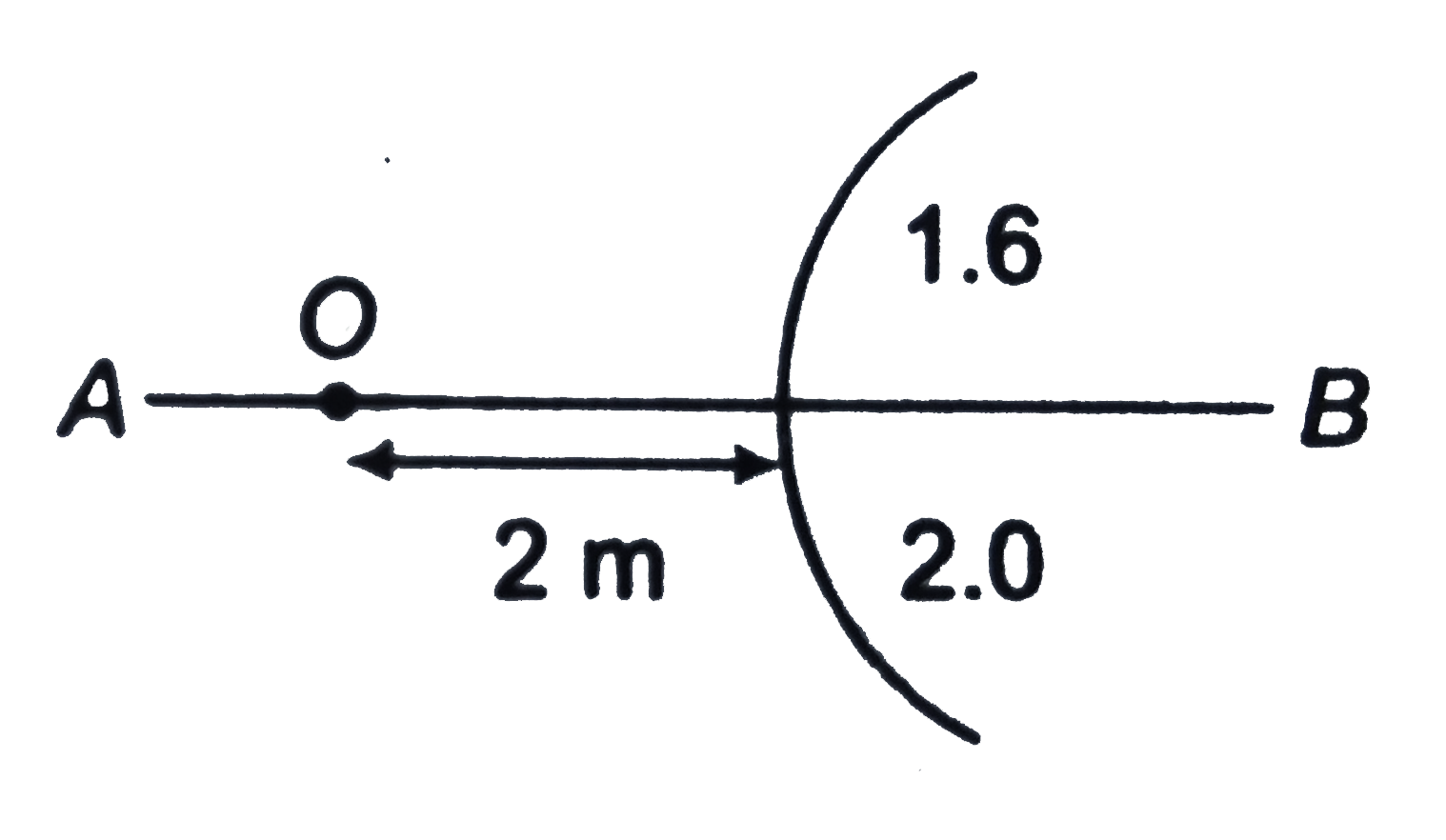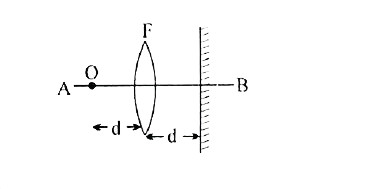In the figure shown , a point object O is placed in air on the principal axis. The radius of curvature of the spherical surfaces is 60cm. I is the final image formed after all reflections and refractions.

if d1=120cm, then the 'lf' is formed 'O' for any v alue of d2 .
if d1=240cm, then the 'lf' is formed 'O' only if d2=360cm .
if d1=240cm, then the 'lf' is formed 'O' for all v alues of d2 .
if d1=240cm, then the 'lf' cannot be formed in 'O' .
The correct Answer is:A, B
N//a
Topper's Solved these Questions
- GEOMATRICAL OPTICS BOOK - RESONANCECHAPTER - GEOMATRICAL OPTICS EXERCISE - Exercise-3
79 Videos
- GEOMATRICAL OPTICS BOOK - RESONANCECHAPTER - GEOMATRICAL OPTICS EXERCISE - Advance level Problems
35 Videos
- GEOMATRICAL OPTICS BOOK - RESONANCECHAPTER - GEOMATRICAL OPTICS EXERCISE - Exercise-1
142 Videos
- EXPERIMENTAL PHYSICSBOOK - RESONANCECHAPTER - EXPERIMENTAL PHYSICSEXERCISE - PART -II
10 Videos
- GRAVITATIONBOOK - RESONANCECHAPTER - GRAVITATIONEXERCISE - HIGH LEVEL PROBLEMS
16 Videos
Similar Questions
Knowledge Check
In the figure, a point object O is placed in air. A spherical boundry separates two media of radius of curvature 1.0m. AB is principal axis. The separation between the images formed due to refraction at spherical surface is
 A12mB20mC14mD10m
A12mB20mC14mD10mA point object is placed on the principal axis of a spherical mirror. The object -distance u is
Adefinitely negativeBdefinitely positiveCpositive if the object is to the left of the centre of curvatureDpositive if the object is to the right of the centre of curvatureAn object of height 0.5 cm is placed laterally in the medium of refractive index m = 1.5 at a distance 100 cm away form the pole. The radius of curvature of the surface is 20 cm. The height of the image formed after refraction is
 A0.8 cmB1 cmC0.25 cmD1.5 cm
A0.8 cmB1 cmC0.25 cmD1.5 cm
All objects referred to the subsequent problems lie on the principal axis.

In above question if the object is real, then the final image formed after two refractions :
View SolutionIn the figureshownm the image of a real object is formed at point I. AB is the principal axis of the mirror. The mirror must be

View SolutionA point object O is placed in front of a glass rod having spherical end of radius of curvature 30cm. The image would be formed at

View SolutionA point object O is placed in front of a glass rod having spherical end of radius of curvature 30cm. The image would be formed at

View SolutionIf an objects is placed 10 cm from a convex mirror of radius of curvature 60 cm, then the position of image is
View Solution


